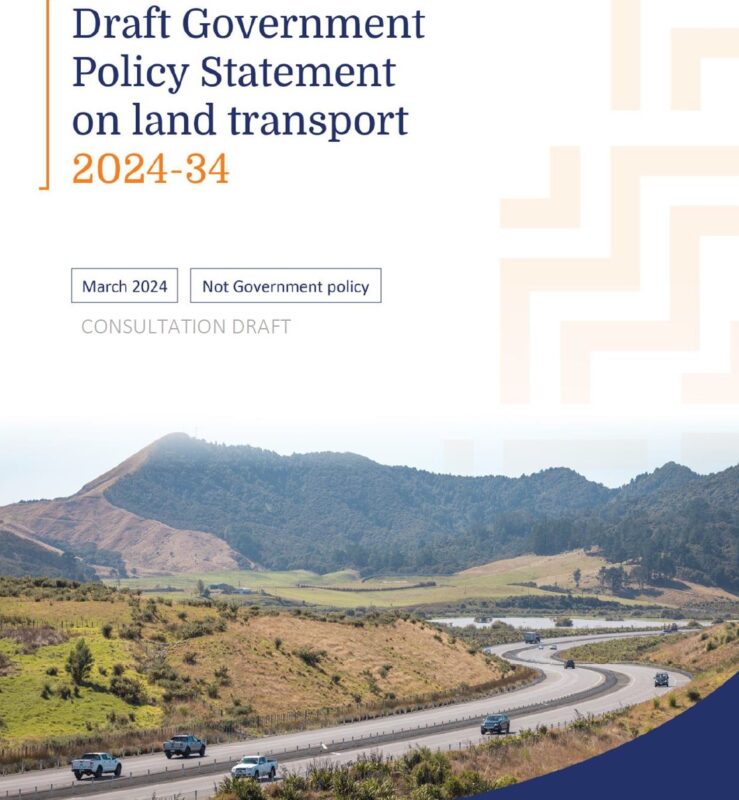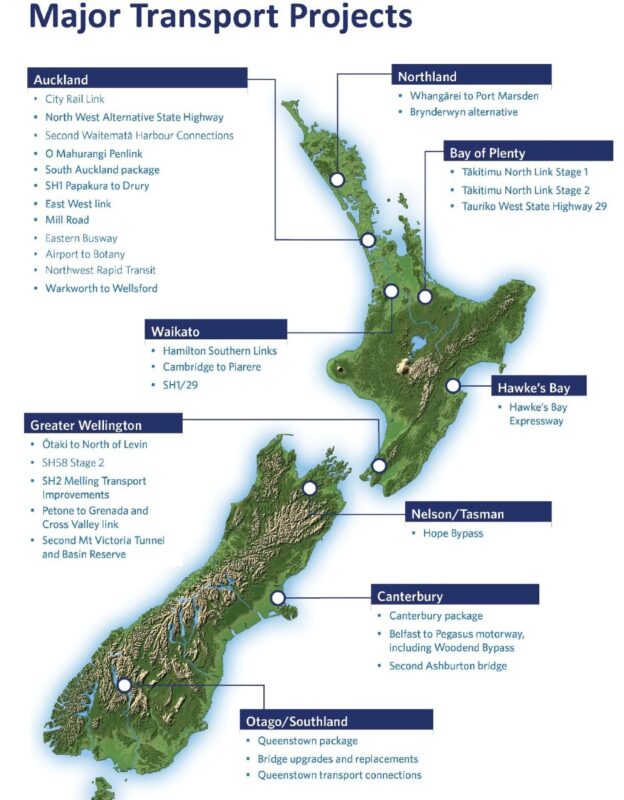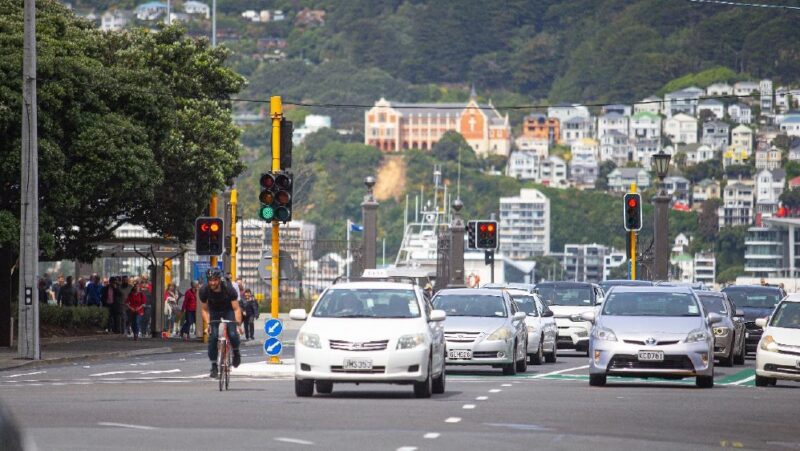As mentioned a few weeks back, the new Government has released its revised Govt Policy Statement (GPS) on Transport for consultation and, to no huge surprise really, it represents a huge shift away from sustainable transport options like walking and cycling (not to mention rail) and puts all the focus back on mega-road projects.

The thrust of the draft GPS affects non-roading options in a couple of ways. Firstly, there is the dramatic shift in funding away from what was previously proposed for walking and cycling, with annual funding allocations heading down to $70-130 million a year from 2025. Most other funding buckets stay relatively static or drop (like rail) – except for the “state highway improvements” pot, which is looking to jump to ~$2 billion a year to help pay for potentially over 15 “Roads of National Significance” (RoNS) in the next decade or so.

There’s also various little ways that the policies in the draft GPS makes it harder to do some things:
- All investment in walking and cycling can only come from the “Walking & Cycling” funding bucket – so if you want (say) a pathway alongside one of the new highways (including their bridges), it will have to be funded from that.
- Maintenance of walking/cycling facilities has to also now come from the same bucket of money, rather than being part of the maintenance fund for roads in general. It’s difficult to see how workable it will be for a roading authority to seek separate funding for maintaining the traffic lanes on the road, the cycle lane on the road, the footpath next to the road, etc…
- Investment in walking and cycling can only take place where demonstrated volumes of pedestrians and cyclists already exist – which seems to defeat the very point of why active mode facilities are built in the first place; because no-one feels safe to walk/cycle without them…
The road safety implications of the proposals also bear pondering. The Government has talked tough about reversing so-called “blanket” speed reductions (hint: they’re not blanket…) “where it is safe to do so”. You also won’t be allowed to use the Safety funding bucket for proven Safe System traffic calming features like raised crossings and platforms. I think they will find that, almost without exception, reduced speeds from these measures have delivered safety benefits for all road users, including people cycling.

It’s ironic too that this GPS (and the Government) has a big emphasis on “economic effficiency” and “value for money”; indeed, walk/cycle projects have to show “a clear benefit for increasing economic growth” to be funded. Time and time again, cycling projects have been shown to have immense benefits; meanwhile the mega-expensive RoNS often struggle to even get a Benefit/Cost ratio >1…
Not surprisingly, a lot of different organisations and groups are not at all happy with what is being proposed, from advocacy groups like Cycling Action Network, Living Streets Aotearoa, and Transport for All to industry organisations like Transportation Group NZ and various local councils like Christchurch and Auckland. Sure, there are a few scraps of useful ideas (even I would be happy to see traffic fines be increased and to introduce road congestion charges), but this is minor in the face of a plan that is even struggling to pay for itself (hmm, if only there were some multi-billion-dollar projects we could cut out…).
Consultation on this draft GPS closes this Tuesday 2nd April at noon (great timing just after a long Easter weekend…); you can either email your thoughts directly or you can fill in an online survey. How much the Transport Ministry (and more particularly the Minister) actually pay attention to people’s concerns will be interesting to see; I’d like to think that they might at least take heed of some of the very real issues that local government will no doubt have about this draft document.
What do you think of the draft GPS?

